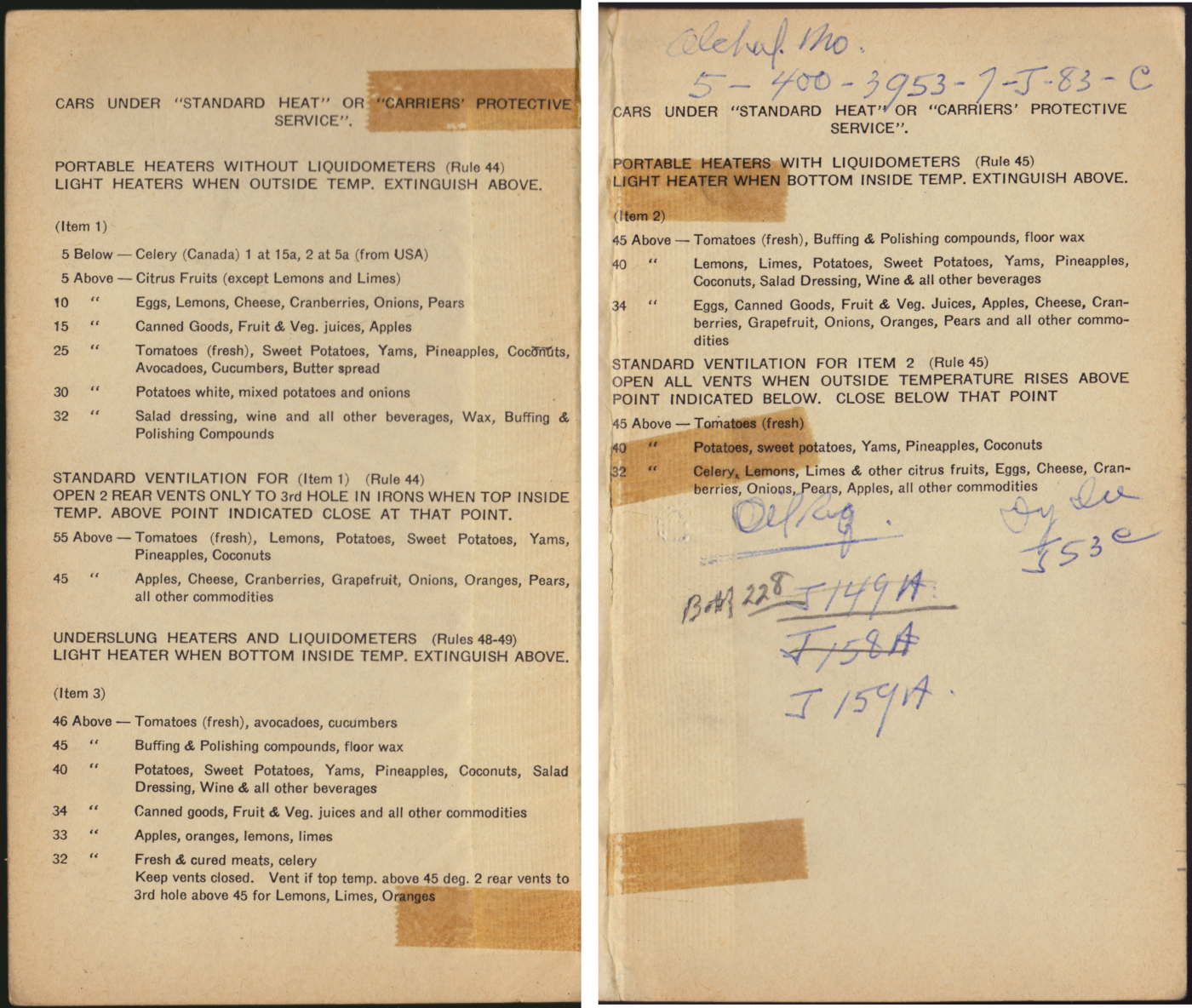In 1967, meat, beer, yeast, lettuce, oranges, grapes, frozen juice, tomatoes etc were travelling by rail. Before semi-trailers were so large, before trucks were so powerful, before highways were so fast and direct, while businesses still had their own spurs and trackside warehouses ... goods such as these had traditionally moved by rail.
Consequently, railcar temperature control systems were once inspected, refueled and replenished at regular intervals by railway employees to protect against spoilage. Interchange rules and company policy would have spelled out how the monitoring system worked and how these activities were to be billed.
The artifact reproduced below is simply a standard CPR record book which was filled up with records in the space of a couple of weeks during the autumn of 1967. I have only reproduced 9 double-paged spreads with this post. Data was recorded in pencil, perhaps because pencils don't freeze in the Canadian winter.
Refrigerator cars cooled by ice placed in end bunkers, and alcohol-burning heaters, are a couple of the climate-control systems you'll see mentioned
CPR's Parkdale Yard no longer exists and was small enough that some large model railway layouts might be able to model the whole thing in its entirety.
My cursory research has turned up nothing from the mid-1960s which would explain the particular 'status' of the cars being checked ...
For example, the cars may have been part of a through freight train consist being serviced. Perhaps the cars had been set-off in the yard for handling through the service areas by a switcher. In some cases the cars must have had a relatively local origin or destination.
The 1964 roadmap below shows the area just west of Union Station in Toronto. Near the left edge of the map you can see Parkdale Station. The CNR and CPR both had facilities at Parkdale and the station is on the CPR side. The yard was 'timetable east' of the station.
 |
| from: Toronto city map; Esso; 1964. |
The CPR was well into the multi-mark period, but the cover suggests another era.
The inside front cover and inside rear cover are reproduced together below.
People familiar with the rolling stock of the era will enjoy solving the 'puzzle' of some of these records
and the abbreviations related to the observation and maintenance of the equipment.
... This rough 60-year-old relic has some tales to tell.
















